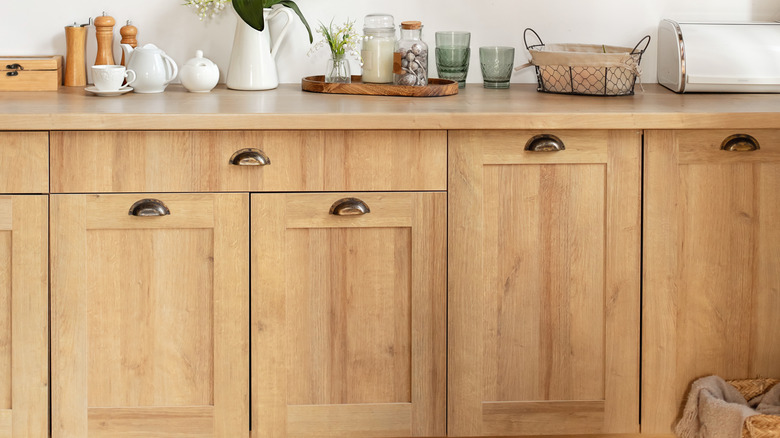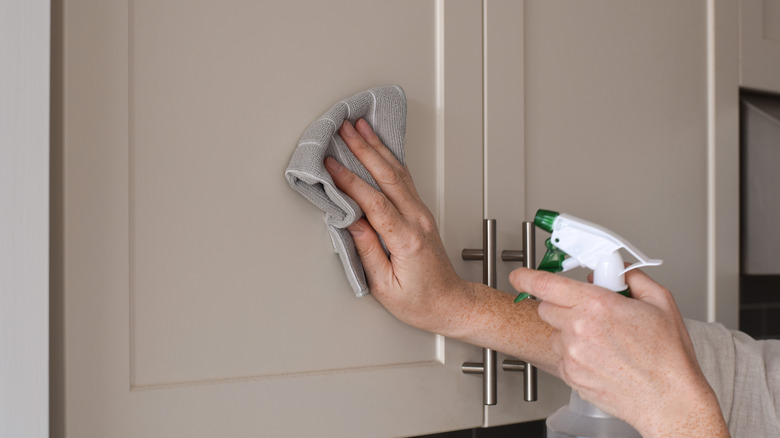The Best Way To Polish Up Wooden Kitchen Cabinets
While having shiny, wooden cabinets in your kitchen can be rewarding, it can also be challenging to maintain. Kitchen cabinets are exposed to dust, grease, smoke, and plenty of fingerprints, so keeping them looking as shiny and clean as when you got them takes more effort than some people realize. Having the right cleaners and polish can make all the difference.
You can't just use any polish for a wood cabinet; certain products are used for certain applications. There are waxes, oils, and soaps, but each type reacts differently with the wood. Oils leave a great shine, but they show excess dust and fingerprints and leave a greasy residue. Olive oil can even come in handy for polishing your cabinets in small amounts. Wax can leave a thicker residue, making it more susceptible to wear and tear.
The best option for a wood cabinet is polish for finished furniture rather than raw wood. Wood furniture typically has a coating that wears over time; therefore, it's essential to polish with a product that won't damage the existing layer and instead enhances its appearance. Choose a polish that works for the finish on your cabinet rather than the type of wood. You can use something like Howard Feed-N-Wax, or even a simple aerosol like Old English to simultaneously clean and polish.
Best tips for cleaning and polishing kitchen cabinets
Given the amount of residue that can build up on a kitchen cabinet, it's essential to know the best products for your circumstances. You can use a bread clip as a hack for cleaning small crevices, but avoid using something abrasive that scratches the wood's coating. Removing grease can be challenging, but a mixture of dish soap and water is the best way to clean grease off your kitchen cabinets. Vinegar's acidity can sometimes help break down stains, but grease is often acidic, reducing the efficacy of vinegar's cleaning power.
Avoid using concentrated soap on a wooden cabinet; it should be diluted in water for easy cleanup. A soap like Murphy's gives the proper ratio on the bottle, so you know how much to use without wasting soap. However, don't soak your cabinets in cleaning solution. Use a damp rag or sponge to wipe the surface clean, then wipe the soapy water off the cabinets to prevent leaving a residue before you've even polished. To ensure you've got the right polish for the job, apply a small amount to a subtle spot to ensure you like how it looks.
Once you're happy, use a small amount of polish on a low-lint rag or microfiber cloth and polish in a circular motion to cover the surface thoroughly. You shouldn't need multiple coats, but you may have to reapply the polish every few months, depending on the conditions of your household. If you have kids or pets that dirty your cabinets, you'll likely need to clean more often. However, if you do a lot of cooking on the stovetop, you'll need to clean and polish more often.

